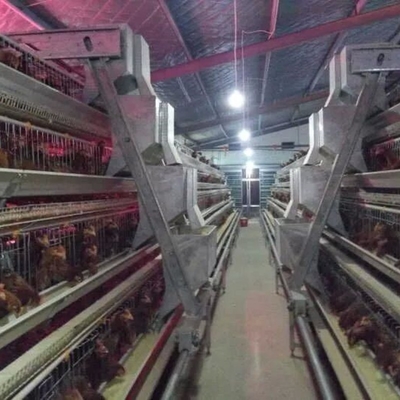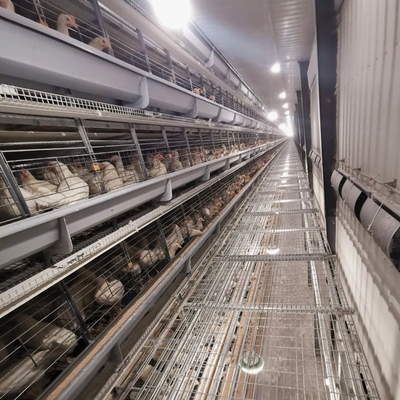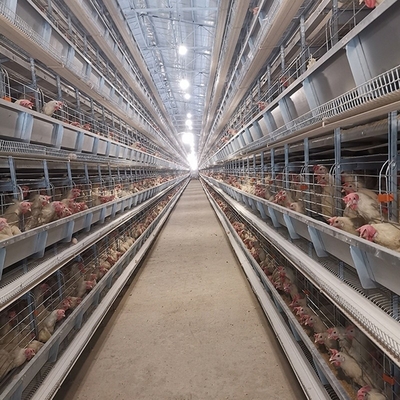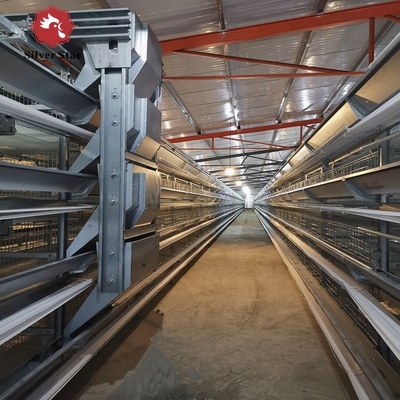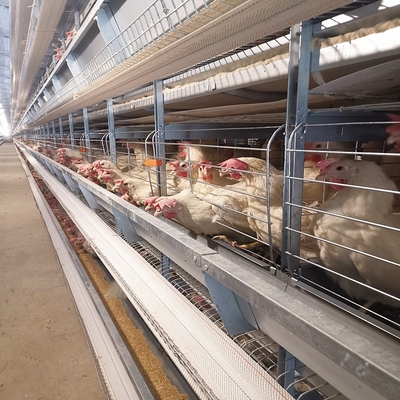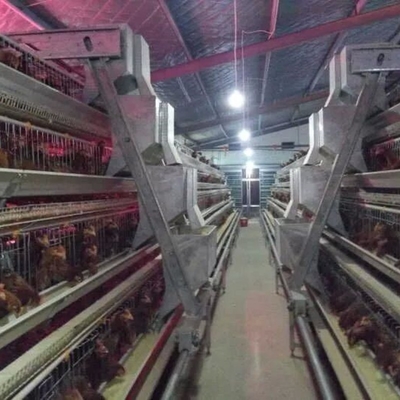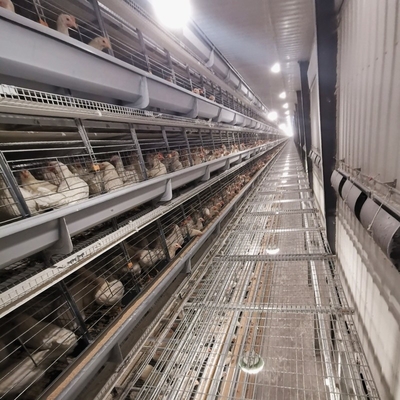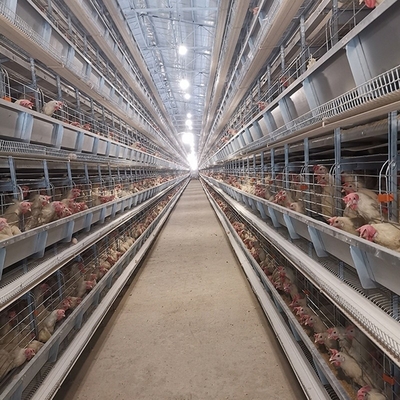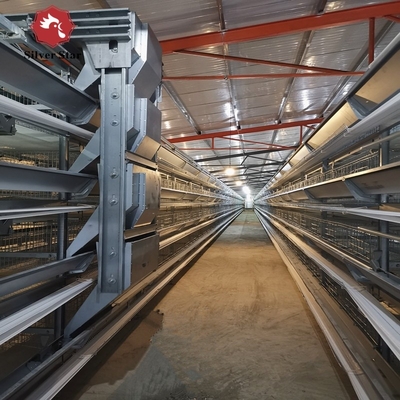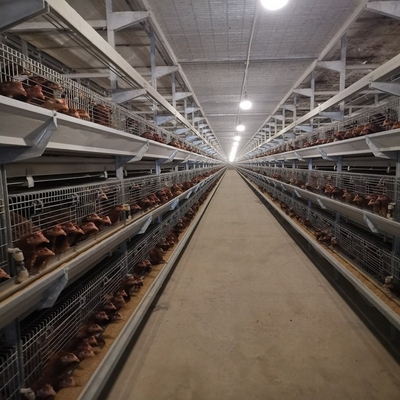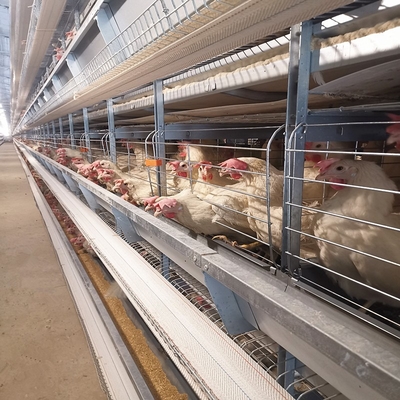-
 Mr. Umar JibrilWe have been cooperating with Silver Star since the year of 2011, our first chicken farm layer cage order is also very strong so far. High quality and durable cages, i am very satisfied.
Mr. Umar JibrilWe have been cooperating with Silver Star since the year of 2011, our first chicken farm layer cage order is also very strong so far. High quality and durable cages, i am very satisfied. -
 Mr. BryanSiver Star battery chicken cage is worth to order: Last year we cooperated first time on hot dip galvanizing layer chicken cage. I was really surprised with the poultry cage when i recevied. What's more, Siver Star gave us more patient installation guidance. Now my farm is running very well, soon i will prepare for my second house.
Mr. BryanSiver Star battery chicken cage is worth to order: Last year we cooperated first time on hot dip galvanizing layer chicken cage. I was really surprised with the poultry cage when i recevied. What's more, Siver Star gave us more patient installation guidance. Now my farm is running very well, soon i will prepare for my second house. -
 Mr. Halim SatriaIt is unforgettable for us to meet on exhibition booth, we talked with Silver Star manager Ms. Joise, and started our first business for my new chicken farms with automatic chicken cage. Ms. Joise send the engineer to guide installation for me, easy to operate, i am thankful.
Mr. Halim SatriaIt is unforgettable for us to meet on exhibition booth, we talked with Silver Star manager Ms. Joise, and started our first business for my new chicken farms with automatic chicken cage. Ms. Joise send the engineer to guide installation for me, easy to operate, i am thankful.
Battery Cages For Laying Hens In This Poultry Farmhouse Are Hot-dip Galvanized For Durability.

Contact me for free samples and coupons.
Whatsapp:0086 18588475571
Wechat: 0086 18588475571
Skype: sales10@aixton.com
If you have any concern, we provide 24-hour online help.
x| Name | Chicken Feeder Cages For Layers | Product Name | Cages For Layers |
|---|---|---|---|
| Application | Poultry Field Cages For Layers | Material | Hot Dip Galvanized Cages For Layers |
| Color | Silver Cages For Layers | Usage | Chicken Raising Cages For Layers |
| Feature | Durable Cages For Layers | Advantage | Long Time Used Cages For Layers |
| Size | 650*1250*2300(cm) Cages For Layers | Capacity | 200-300 Chickens/set Cages For Layers |
| Highlight | Poultry Farmhouse Battery Cages,Hot-dip Galvanized Battery Cages,Laying Hens Battery Cages |
||
Hot-dip Galvanized Battery Cage System for Laying Hens in Poultry Farm Housing
management
The layer chicken cage
The so-called cage-raising method is to use a chicken cage to raise chickens. Because the chicken body is fixed in the chicken cage, there is no choice of environmental conditions, completely rely on artificial to provide a variety of survival, production conditions, so cage chicken requires higher feeding management technology.
Cage rearing is the predominant method of three-dimensional chicken production and the primary form of off-ground raising. Over 80% of laying hens in developed nations are housed in cages. In China, cage rearing has seen increasing adoption and positive outcomes due to advancements in cage materials and structures. It is considered the future direction for commercial production of laying hens, chicks, breeders, and broilers, offering significant advantages over floor rearing methods.
Cage systems enable a 3 to 5-fold increase in chicken density per area, thereby conserving housing and land resources.
The use of cages prevents the transmission of diseases among chickens.
Cage systems facilitate easy management, lower labor demands, and enhance productivity.
Cages with controlled environments promote even growth and reliable egg laying.
Cages allow for easy observation and removal of unhealthy chickens, ensuring flock health and productivity.
Cages minimize ground contact, reducing parasitic diseases and cutting medication costs, eliminating the need for bedding materials and saving money.
Clean and hygienic chicken houses prevent eggs from being contaminated by feces, thereby enhancing product quality.
Cage-reared chickens' reduced activity decreases feed consumption, improves feed efficiency, and enhances economic benefits.
Simple collection of chicken manure in cages facilitates its utilization as effective feed for pigs and fish after fermentation.
Cage-raised chickens' issues like nutritional deficiencies, fatty liver syndrome, egg-laying fatigue, chest cysts, brittle bones, and flexible bones can be alleviated through better feeding management and improved cage materials.
Multi-layer coops can promote the health of chickens
Poultry farmers often struggle to achieve healthy outcomes in chicken rearing due to their negligence in utilizing multi-layer coops. These coops are pivotal in maintaining chicken health and boosting reproductive efficiency.
The original multi-storey coop was not just a coop with a metal mesh floor and the necessary heating elements. The design of a high-quality multi-layer chicken coop is different from that of an ordinary wire cage. The wire floor is designed to facilitate fecal leakage, removing feces from around the flock and ultimately minimizing the risk of fecal-borne diseases. This will keep the chickens healthy and thus protect the interests of the farmers.
Increase egg production
Chickens raised in healthy conditions are more productive compared to those raised in unhealthy environments, and enrichment cages enhance the potential for egg production.
Statistics suggest that 60% of eggs utilized in products such as mayonnaise, sandwiches, and cakes originate from caged chickens, highlighting the preference for multi-layer cages to enhance egg-laying efficiency.
Product introduction
Henan silver star cage net introduction, 1250 type frame layer layer cage, scope of application: laying hens, breeding hens. Each cage net 650 mm long, 1250 mm wide, each cage net around a door, each door 650 mm long, 650 mm deep, 500 mm high. Large open space for maximum comfort, precise structural details to enhance welfare, up to 9 animals per door. The chicken has an area of 452 square centimeters. Each cage net feeding capacity of 18.
The breeding capacity of each compartment of three layers is 54. The breeding capacity of each enclosure is 72. The breeding capacity of each enclosure is 90. There are 108 birds in each enclosure of six floors. Four layers are the most common. Multilayer partition structure optional, duplex multilayer structure generally to take 4 plus 4 eight layers, or 3 plus 3 plus 3 nine layers. Reduce housing costs. Improve the overall value. To learn more about related products, matching related automatic equipment welcome to inquire
| 3-tiers | 0.65*1.25*2.65 m | 54 chickens |
| 4-tiers | 0.65*1.25*3.3 m | 72 chickens |
| 5-tiers | 0.65*1.25*4.6 m | 90 chickens |
| 6-tiers | 0.65*1.25*4.9 m | 108 chicekns |
| 7-tiers | 0.65*1.25*5.5 m | 126 chickens |
| 8-tiers | 0.65*1.25*6.2 m | 144 chickens |
| 9-tiers | 0.65*1.25*7.2 m | 162 chickens |
![]()
![]()



